#lorawan mesh arduino
Explore tagged Tumblr posts
Text
GPIOs do LoRaMesh da Radioenge: Portas digitais
Aprenda como usar as GPIOs do módulo LoRaMesh da Radioenge
As GPIOs do LoRaMesh da Radioenge possibilita que possamos fazer aplicações de automação com um uso reduzido de hardware, dedicando apenas ao circuito de chaveamento (se necessário) e de alimentação. No total temos no LoRaMesh 8 GPIOs sendo todas configuráveis como entrada ou saída digital e duas como leitura analógica. Porém neste post vamos apenas abordar as portas digitais. Por qual motivo…
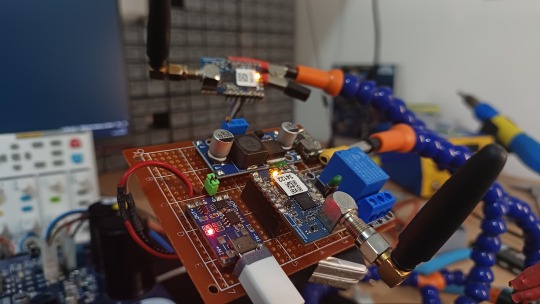
View On WordPress
#lora mesh arduino#lora mesh chat#lora mesh device#lora mesh library#lora mesh module#lora mesh network#lora mesh network raspberry pi#lora mesh protocol#lora mesh radio#lora mesh range#lora vs lorawan#loramesh#lorawan#lorawan devices#lorawan gateway#lorawan network#mesh lora
0 notes
Link
When the critical infrastructure that so many of us take for granted goes away, how do we organize ourselves and our communities to respond?
If recent ecological disasters have demonstrated anything, it is the inadequacy of existing models and tools to provide efficient allocation of resources, access to emergency communications, and effective coordination of human effort. Few if any solutions exist that are off-grid, affordable, reliable, easily deployed, and openly standardized.
...
disaster.radio is an off-grid, solar-powered, long-range mesh network built on free, open source software and affordable, open hardware.
Designed to be open, distributed, and decentralized, disaster.radio is currently in the prototype/development phase. To learn more about the technologies driving our development, visit the following pages:
Firmware Hardware Software User guides
disaster.radio is a collaborative project between Sudo Mesh and Secure Scuttlebutt, with additional support from the Internet Society and Institute For the Future.
Read more: https://disaster.radio/
#arduino #lora #lorawan #radio #ham #offgrid #solar #mesh #network
youtube
5 notes
·
View notes
Text
IoT Standards & Protocols Guide - Arya College

The essence of IoT is networking that students of information technology college should be followed. In other words, technologies will use in IoT with a set protocol that they will use for communications. In Communication, a protocol is basically a set of rules and guidelines for transferring data. Rules defined for every step and process during communication between two or more computers. Networks must follow certain rules to successfully transmit data.
While working on a project, there are some requirements that must be completed like speed, range, utility, power, discoverability, etc. and a protocol can easily help them find a way to understand and solve the problem. Some of them includes the following:
The List
There are some most popular IoT protocols that the engineers of Top Engineering Colleges in India should know. These are primarily wireless network IoT protocols.
Bluetooth
Bluetooth is a wireless technology standard for exchanging data over some short distances ranges from fixed and mobile devices, and building personal area networks (PANs). It invented by Dutch electrical engineer, that is, Jaap Haartsen who is working for telecom vendor Ericsson in 1994. It was originally developed as a wireless alternative to RS-232 data cables.
ZigBee
ZigBee is an IEEE 802.15.4-based specification for a suite of high-level communication protocols that are used by the students of best engineering colleges to create personal area networks. It includes small, low-power digital radios like medical device data collection, home automation, and other low-power low-bandwidth needs, designed for small scale projects which need wireless connection. Hence, ZigBee is a low data rate, low-power, and close proximity wireless ad hoc network.
Z-wave
Z-Wave – a wireless communications protocol used by the students of Top Information Technology Colleges primarily for home automation. It is a mesh network using low-energy radio waves to communicate from appliance to appliance which allows wireless control of residential appliances and other devices like lighting control, thermostats, security systems, windows, locks, swimming pools and garage door openers.
Thread
A very new IP-based IPv6 networking protocols aims at the home automation environment is Thread. It is based on 6LowPAN and also like it; it is not an IoT protocols like Bluetooth or ZigBee. However, it primarily designed as a complement to Wi-Fi and recognises that Wi-Fi is good for many consumer devices with limitations for use in a home automation setup.
Wi-Fi
Wi-Fi is a technology for wireless local area networking with devices according to the IEEE 802.11 standards. The Wi-Fi is a trademark of the Wi-Fi Alliance which prohibits the use of the term Wi-Fi Certified to products that can successfully complete interoperability certification testing.
Devices that can use Wi-Fi technology mainly include personal computers, digital cameras, video-game consoles, smartphones and tablets, smart TVs, digital audio players and modern printers. Wi-Fi compatible devices can connect to the Internet through WLAN and a wireless access point. Such an access point has a range of about 20 meters indoors with a greater range outdoors. Hotspot coverage can be as small as a single room with walls that restricts radio waves, or as large as many square kilometres that is achieved by using multiple overlapping access points.
LoRaWAN
LoRaWAN a media access control protocol mainly used for wide area networks. It designed to enable students of private engineering colleges in India to communicate through low-powered devices with Internet-connected applications over long-range wireless connections. LoRaWAN can be mapped to the second and third layer of the OSI model. It also implemented on top of LoRa or FSK modulation in industrial, scientific and medical (ISM) radio bands.
NFC
Near-field communication is a set of communication protocols that enable students of best engineering colleges in India two electronic devices. One of them is usually a portable device like a smartphone, to establish communication by bringing them within 4cm (1.6 in) of each other.
These devices used in contactless payment systems like to those used in credit cards and electronic ticket smartcards and enable mobile payment to replace/supplement these systems. Sometimes, this referred to as NFC/CTLS (Contactless) or CTLS NFC. NFC used for social networking, for sharing contacts, videos, photos,or files. NFC-enabled devices can act as electronic identity both documents and keycards. NFC also offers a low-speed connection with simple setup that can be used by the students of top btech colleges in India to bootstrap more capable wireless connections.
Cellular
IoT application that requires operation over longer distances can take benefits of GSM/3G/4G cellular communication capabilities. While cellular is clearly capable of sending high quantities of data. Especially for 4G with the expense and also power consumption will be too high for many applications. Also, it can ideal for sensor-based low-bandwidth-data projects that will send very low amounts of data over the Internet. A key product in this area is the SparqEE range of products including the original tiny CELLv1.0 low-cost development board and a series of shield connecting boards for use with the Raspberry Pi and Arduino platforms.
Sigfox
This unique approach in the world of wireless connectivity; where there is no signalling overhead, a compact and optimized protocol; and where objects not attached to the network. So, Sigfox offers a software-based communications solution to the students of top engineering colleges in India. Where all the network and computing complexity managed in the Cloud, rather than on the devices. All that together, it drastically reduces energy consumption and costs of connected devices.
SigFox wireless technology is based on LTN (Low Throughput Network). A wide area network-based technology which supports low data rate communication over larger distances. However, it mainly used for M2M and IoT applications which transmits only few bytes per day.
0 notes
Photo
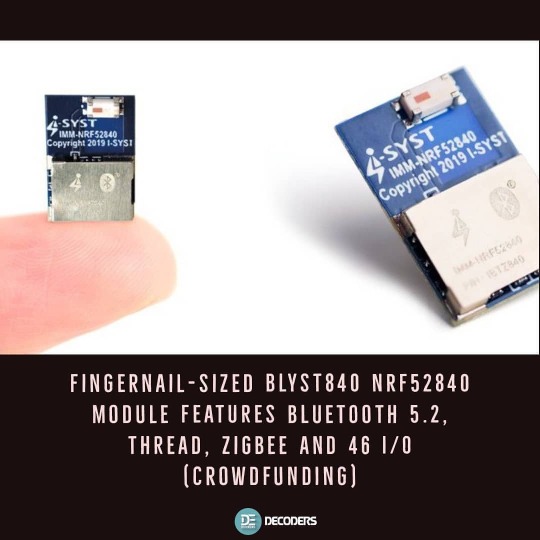
Canada based I-SYST inc has designed a tiny nRF52840 module about the size of a fingernail. BLYST840 module fully leverages the capability of Nordic Semi’s wireless microcontroller with Bluetooth 5.2, Thread, and Zigbee connectivity, and exposes 46 I/Os. BLYST840 specifications: Wireless MCU – Nordic Semiconductor nRF52840 Arm Cortex-M4F microcontroller @ 64 MHz with 1 MB flash, 256 KB RAM Connectivity Bluetooth 5.2 up to 2 Mbps, -96 dBm sensitivity for long-range; Up to 111 dB link budget; Bluetooth Mesh IEEE 802.15.4 radio support for Thread & Zigbee NFC-A Built-in ceramic antenna Output power – Adjustable from +8 dBm to -20 dBm 46 I/O pins exposed via pads around the edges of the module including QSPI/SPI/2-wire/I2S/PDM/QDEC Programmable Peripheral Interface (PPI) SPI interface @ 32 MHz Quad SPI interface @ 32 MHz EasyDMA for all digital interfaces USB 2.0 (12 Mbits) 12-bit/200K SPS ADC Security Arm TrustZone Cryptocell 310 128-bit AES/ECB/CCM/AAR co-processor Misc – Built-in 32 MHz & 32.768 MHz crystal Supply Voltage – 1.7 V to 5.5 V via battery or USB power. Dimensions – 14 x 9 x 1.6mm Certifications – FCC, IC & CE The module is programmable with MicroPython, IOsonata open-source multi-architecture multi-platform library for IoT project, as well as Nordic SDKs. You’ll find some documentation and firmware file on SourceForge. - - Source- CNX software - - ➖➖➖➖➖➖➖➖➖➖➖➖ Follow Us On: @decoders8421 Tag Your Friends 👼. Ask any query or doubt in comments. ➖➖➖➖➖➖➖➖➖➖➖➖ - #fpga #atmega #arm #nxp #embedded #iot #developmentboard #rpi #raspberrypi #arduino #arduinouno #raspberrypi3 #tinkercad #tinker #stm32 #esp32 #lorawan #lora #ai #ml #beagleboneai #raspberrypi4 #sbc #cortex #singleboard #singleboardcomputer #iot #zigbee #opencv #raspberrypicamera https://www.instagram.com/p/CBLtnTpHm-Q/?igshid=yket98i0uska
#fpga#atmega#arm#nxp#embedded#iot#developmentboard#rpi#raspberrypi#arduino#arduinouno#raspberrypi3#tinkercad#tinker#stm32#esp32#lorawan#lora#ai#ml#beagleboneai#raspberrypi4#sbc#cortex#singleboard#singleboardcomputer#zigbee#opencv#raspberrypicamera
0 notes
Text
Wireless Vibration Sensors Network
Vibration Sense!! Generally Exhibited by the prong of a tuning fork or by swinging the pendulum which slightly describes as random motion of molecules or particle in the fluid(Brownian motion) as well as in atmosphere leads to the continuous bombardment in surroundings which give rise to the practical application named as Vibration.
Only simple three physics factors of vibration change the life cycle in every technical stage which use to analyze and improvise some great application comes under the mechanical, Civil, Electrical and many other field lines too.
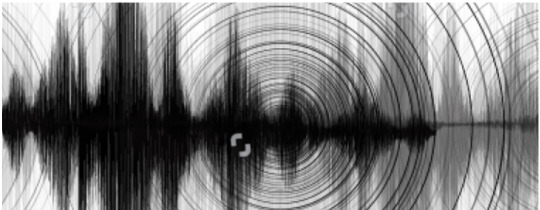
Moving Forward with some Vibration analysis significance, there are some good presentations we can learn or check through the point of electromechanical or robotics or mechatronics view, where industries actually have to pay a very high cost for maintenance for great standard devices health status testing as well as the spare part replacement for industrial machinery systems rather than repairing it on the right time. Several Industrial Infrastructures whether it is the manufacturing of mechanical or electrical or any kind of very high patronized technical work with its correct parameters and great premises factor to be analyzed at the correct time to take the best measures to avoid any improbable causes or damages also at the very important extremity related to every equipments as well as according to users(employee). Still, industries always try to find every better way to find cheap and best solutions which is good for industrial vibration monitoring upgrades that depict the industry 4.0.
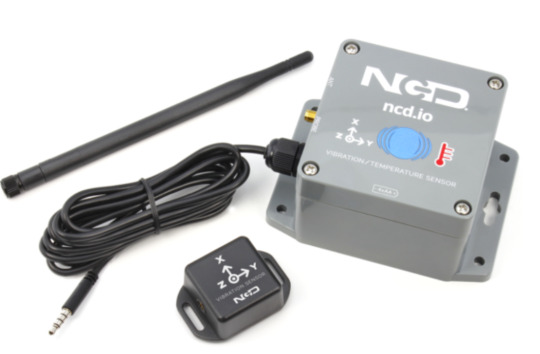
Here is the talk where we proudly introduce the device as Wireless Vibration Sensor which has the capability to analyze machine life status and gives very unique support to users while working with high tech machines. This smart vibration sensors works with mesh technology also known as WSN(wireless sensor network), elaborated in the previous blog about how these sensors create private network topology and easy to communicate with the computer and embedded controllers like Arduino raspberry pi, pycom etc, which help these sensors to send and share appropriate industry equipment analysis to users. These kind of sensor not only create the private network but also has the capability to connect through online cloud servers like Azure, AWS, firebase and many kind of IOT cloud platforms with secure protocols to even communicate through cellular services like Lorawan, particle electron and many other cellular services for providing the infrastructure with smart factory with ultra-low latency and easy to connect securely through different useful web application for machine health analysis.
Descriptive features of Wireless vibration transmitter perform the operation through a highly precise 3 axis accelerometer with the accuracy rate of +/-16 g which help to convert the real-time physical oscillation signals to 2 power 32 step size digital data readings which share the data to users through processors or controllers with specific software available with NCD to monitor industrial equipment through wireless repeaters, easily compatible with PC’s or laptop or through specified codes which share the information, as per the requirement of users in both. The Ultra low power features for circuit design of wireless vibration sensor alarm Powered by just 2/4 AA batteries and an operational lifetime of 500,000 wireless transmissions, 10 years of battery life can be expected depending on environmental conditions and the data transmission interval and with an optional point for the external power source. It uses onboard antenna range between 2 miles for wireless connectivity using an open communication protocol to provide the better configuration with different kind of application which help to integrate with any kind of control systems easily.
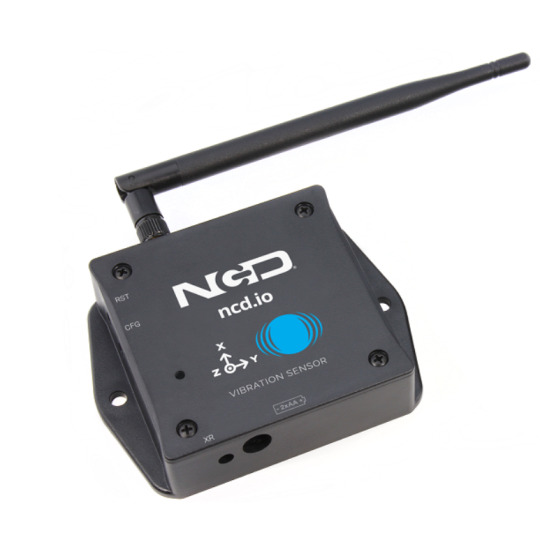
There will be some specific parameters which will be provided by this kind of wireless vibration sensor alarm system with minimum 0.01g or Less accuracy for excellent conditions of machinery and Maximum 2.5g or More for Shutdown the Machine (while monitoring the temperature of machines at same time) and look for possible causes and overcome through maintenance with additional application to analyze the mechanical rotor life status, shaft alignment analysis, corrosion detection of Pumps, gearboxes, fans, compressors, motor, check frequency emissions of electromechanical and fluid flows of traps, energy optimization, monitor the real-time data from PLC’s. This kind of machine’s health status share the parameters several times per day and provide data to your existing vibration monitoring systems which allows the maintenance team to monitor more channels with less resources by eliminating the collection of vibration data for predictive analysis using wireless communication. The monitoring system also allows check the daily status on machines in dangerous, remote site locations also through unique cellular services.
The Wireless vibration accelerometer sensors is one of its kind which is going to low down the maintenance cost and share the great results to protect machine health to vast extent, price within the range of $180 to $190 with manual describes the default configuration and integration process of sensor with high tech machines and get them connected with IOT world easily.
0 notes
Text
Leitura analógica do LoRaMesh da Radioenge
Aprenda como usar a leitura analógica com o módulo LoRaMesh da Radioenge
A leitura analógica com o LoRaMesh possibilita com que possamos fazer um amplo sistema de sensoriamento remoto sem precisar necessariamente de microcontrolador adicional na parte do slave. Por qual motivo usar a leitura analógica do LoRaMesh da Radioenge? Uma leitura digital em muito dos casos já é mais que o suficiente para saber se algo est�� ou não funcionando, mas a leitura analógica do…
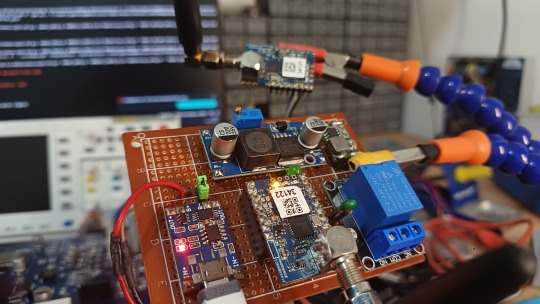
View On WordPress
#lora mesh arduino#lora mesh chat#lora mesh device#lora mesh library#lora mesh module#lora mesh network#lora mesh network raspberry pi#lora mesh protocol#lora mesh radio#lora mesh range#lora vs lorawan#loramesh#lorawan#lorawan devices#lorawan gateway#lorawan network#mesh lora
0 notes
Text
LoRa Mesh da Radioenge Tutorial Completo
LoRa Mesh é uma tecnologia que utiliza a modulação LoRa, porém cada módulo tem a capacidade de atuar como um repetidor que fica repassando a informação até chegar ao destinatário. Clique no link, titulo ou imagem para saber mais.
LoRa Mesh da Radioenge utiliza a tecnologia LoRa porém o grande diferencial deste módulo é a capacidade de se comunicar com outros módulos de modo que a informação saia de ‘A‘ e chegue a ‘J‘ sem se comunicarem de forma direta. Se ‘J‘ estiver fora do alcance de ‘A’, a informação vai percorre todo o “alfabeto”, até chegar ao destino. Caso isso seja confuso para você, ao longo deste post irá…
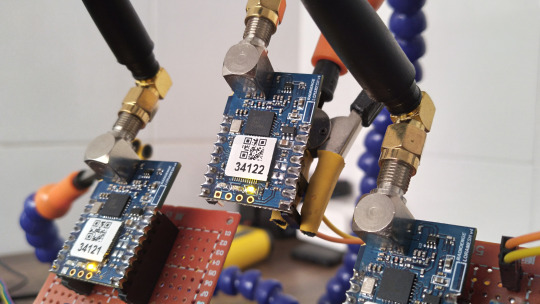
Ver no WordPress
#alliance lora#arduino lora#arduino lora mesh network#lora agricultura#lora alcance#lora alliance#lora arduino#lora mesh#lora mesh arduino#lora mesh network arduino#lora mesh protocol#lora mesh radio#lora mesh range#lorawan mesh arduino#rede lora mesh
0 notes
Text
IoT protocols every engineer should know about - Arya College

The essence of IoT is networking that students of information technology college should be followed. In other words, technologies will use in IoT with a set protocol that they will use for communications. In Communication, a protocol is basically a set of rules and guidelines for transferring data. Rules defined for every step and process during communication between two or more computers. Networks must follow certain rules to successfully transmit data.
While working on a project, there are some requirements that must be completed like speed, range, utility, power, discoverability, etc. and a protocol can easily help them find a way to understand and solve the problem. Some of them includes the following:
The List
There are some most popular IoT protocols that the engineers of Top Engineering Colleges in India should know. These are primarily wireless network IoT protocols.
Bluetooth
Bluetooth is a wireless technology standard for exchanging data over some short distances ranges from fixed and mobile devices, and building personal area networks (PANs). It invented by Dutch electrical engineer, that is, Jaap Haartsen who is working for telecom vendor Ericsson in 1994. It was originally developed as a wireless alternative to RS-232 data cables.
ZigBee
ZigBee is an IEEE 802.15.4-based specification for a suite of high-level communication protocols that are used by the students of best engineering colleges to create personal area networks. It includes small, low-power digital radios like medical device data collection, home automation, and other low-power low-bandwidth needs, designed for small scale projects which need wireless connection. Hence, ZigBee is a low data rate, low-power, and close proximity wireless ad hoc network.
Z-wave
Z-Wave – a wireless communications protocol used by the students of Top Information Technology Colleges primarily for home automation. It is a mesh network using low-energy radio waves to communicate from appliance to appliance which allows wireless control of residential appliances and other devices like lighting control, thermostats, security systems, windows, locks, swimming pools and garage door openers.
Thread
A very new IP-based IPv6 networking protocols aims at the home automation environment is Thread. It is based on 6LowPAN and also like it; it is not an IoT protocols like Bluetooth or ZigBee. However, it primarily designed as a complement to Wi-Fi and recognises that Wi-Fi is good for many consumer devices with limitations for use in a home automation setup.
Wi-Fi
Wi-Fi is a technology for wireless local area networking with devices according to the IEEE 802.11 standards. The Wi-Fi is a trademark of the Wi-Fi Alliance which prohibits the use of the term Wi-Fi Certified to products that can successfully complete interoperability certification testing.
Devices that can use Wi-Fi technology mainly include personal computers, digital cameras, video-game consoles, smartphones and tablets, smart TVs, digital audio players and modern printers. Wi-Fi compatible devices can connect to the Internet through WLAN and a wireless access point. Such an access point has a range of about 20 meters indoors with a greater range outdoors. Hotspot coverage can be as small as a single room with walls that restricts radio waves, or as large as many square kilometres that is achieved by using multiple overlapping access points.
LoRaWAN
LoRaWAN a media access control protocol mainly used for wide area networks. It designed to enable students of private engineering colleges in India to communicate through low-powered devices with Internet-connected applications over long-range wireless connections. LoRaWAN can be mapped to the second and third layer of the OSI model. It also implemented on top of LoRa or FSK modulation in industrial, scientific and medical (ISM) radio bands.
NFC
Near-field communication is a set of communication protocols that enable students of best engineering colleges in India two electronic devices. One of them is usually a portable device like a smartphone, to establish communication by bringing them within 4cm (1.6 in) of each other.
These devices used in contactless payment systems like to those used in credit cards and electronic ticket smartcards and enable mobile payment to replace/supplement these systems. Sometimes, this referred to as NFC/CTLS (Contactless) or CTLS NFC. NFC used for social networking, for sharing contacts, videos, photos,or files. NFC-enabled devices can act as electronic identity both documents and keycards. NFC also offers a low-speed connection with simple setup that can be used by the students of top btech colleges in India to bootstrap more capable wireless connections.
Cellular
IoT application that requires operation over longer distances can take benefits of GSM/3G/4G cellular communication capabilities. While cellular is clearly capable of sending high quantities of data. Especially for 4G with the expense and also power consumption will be too high for many applications. Also, it can ideal for sensor-based low-bandwidth-data projects that will send very low amounts of data over the Internet. A key product in this area is the SparqEE range of products including the original tiny CELLv1.0 low-cost development board and a series of shield connecting boards for use with the Raspberry Pi and Arduino platforms.
Sigfox
This unique approach in the world of wireless connectivity; where there is no signalling overhead, a compact and optimized protocol; and where objects not attached to the network. So, Sigfox offers a software-based communications solution to the students of top engineering colleges in India. Where all the network and computing complexity managed in the Cloud, rather than on the devices. All that together, it drastically reduces energy consumption and costs of connected devices.
SigFox wireless technology is based on LTN (Low Throughput Network). A wide area network-based technology which supports low data rate communication over larger distances. However, it mainly used for M2M and IoT applications which transmits only few bytes per day.
Thanks for Read our blog, you can check out full blog on official Page Arya College, Arya College is one of the Best Engineering College In Jaipur Rajasthan. In This College Many Branches for Engineering you can make great future with us. Arya College Provides Computer Engineering, Electrical Engineering & Electronics Engineering’s Branch for our Engineering students with top companies placements in campus.
0 notes